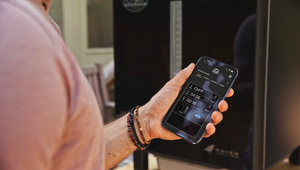
Beyond the Dashboard: Leveraging Predictive Analytics to Drive Creative Strategy in Paid Search

The way brands use data in marketing has changed. For years, digital marketers relied on historical performance data to guide future decisions—but that’s no longer enough. Consumer behavior shifts rapidly, competition is fierce, and if you’re only looking at what worked yesterday, you’re already behind.
The real opportunity lies in predictive analytics—a data-driven approach that doesn’t just analyse the past but anticipates what will work next. It’s about being proactive instead of reactive, using insights to shape strategy rather than just responding to trends after they’ve already gained traction.
For brands and agencies focused on sustained growth in paid search, predictive analytics is a game-changer. It enables smarter audience targeting, sharper ad messaging, and more efficient budget allocation—all while keeping creativity at the center of your strategy.
The Big Question: How Can Data Enhance Creativity Instead of Limiting It?
A question I hear all the time is: How do we balance data-driven decision-making with creative originality? It’s a valid concern—when brands lean too heavily on automation and machine learning, there’s a risk that everything starts to look and feel the same.
But here’s the thing: Data should fuel creativity, not flatten it. When used strategically, predictive analytics can actually make paid search campaigns more distinctive, agile, and resonant. Instead of just optimising for past performance, we can use data to push creative boundaries with confidence—knowing we’re aligning with where audiences are heading, not just where they’ve been.
Understanding Predictive Analytics in Paid Search
Predictive analytics is the art (and science) of forecasting what’s next. It uses machine learning, data modeling, and AI to anticipate search trends, user behavior, and auction dynamics—before they become obvious to competitors.
Unlike traditional analytics, which focuses on what happened and why it happened, predictive analytics answers a far more powerful question:
“What’s likely to happen next, and how do we prepare for it?” That’s where the real creative advantage comes in. Instead of reacting to data after the fact, brands can use predictive insights to design campaigns that are forward-thinking and strategically disruptive.
Integrating Predictive Models with Creative Strategy Innovative Campaign Structuring
Predictive analytics helps advertisers anticipate seasonal shifts, new keyword opportunities, and evolving consumer behaviors. Instead of following rigid campaign structures, brands can embrace more agile, experimental setups that get ahead of the curve.
Example: A brand launching a new product could identify future high-value customer segments and test non-traditional keyword approaches or custom audience layering to drive early adoption.
Smarter Bidding and Budget Allocation
Creativity in paid search isn’t just about ad copy—it’s also about how budgets are deployed strategically. Predictive insights allow brands to anticipate which keywords, audiences, and placements will deliver the highest value in the future, rather than just reallocating spend based on past performance.
Example: If predictive modeling indicates a rising trend in DIY home improvement, a brand could proactively shift budget toward related YouTube content and niche search terms—capitalising on the demand before competitors catch on.
Expanding Audience Targeting with First-Party Data
Instead of relying solely on Google’s automation, brands can use predictive insights from their own CRM data to refine and evolve their audience targeting.
Example: A B2B company could analyse past buying cycles to anticipate which industries will be in-market next quarter, shifting targeting strategies in advance.
Ad Copy That Anticipates Search Trends
By leveraging Google Trends, first-party CRM insights, and external market signals (seasonality, economic shifts, cultural moments), brands can craft ad messaging that aligns with emerging intent—before search demand peaks.
Example: If predictive modeling suggests a surge in eco-conscious consumer searches, a brand could craft and push messaging around sustainability and environmental impact, rather than quality or affordability.
Is First-Party Data Right for You?
First-party data is a major focus for brands right now, but is it worth the investment? Here’s a simple way to assess whether building a first-party data strategy makes sense for your business:
- Do you have repeat customers or long buying cycles?
→ If so, first-party data can help optimise retention and lifetime value.
- Are you seeing diminishing returns from third-party targeting?
→ A first-party data approach allows for more personalised, privacy-compliant campaigns.
- Do you have the infrastructure to collect and analyse data effectively?
→ First-party data is only valuable if it’s clean, structured, and actionable.
If your business checks at least two of these boxes, it’s time to start leveraging first-party insights to drive predictive strategies.
Creative Ways to Use Data Beyond Paid Search
- Predictive insights don’t just impact paid search—they’re transforming other areas of marketing as well:
- Product Development – A beauty brand analysed search trends to develop a lipstick shade that was rising in demand before competitors saw the shift.
- Influencer Partnerships – Some brands are leveraging predictive analytics to identify up-and-coming micro-influencers before they hit mainstream popularity.
- Retail & In-Store Strategy – Predictive search insights help brands optimise store layouts and inventory placement based on emerging trends.
These creative applications show that predictive analytics isn’t just a marketing tool—it’s a strategic business driver.
Trusting the Data: How to Ensure Accuracy
One of the biggest challenges with predictive analytics is knowing what data to trust. It’s easy to fall into the trap of confirmation bias—seeing what we want to see rather than what’s actually happening.
To avoid that, brands should follow a few best practices:
- Cross-reference multiple data sources – No single dataset tells the whole story. Use Google Trends, CRM data, and third-party industry reports in conjunction.
- Account for bias – AI models can reflect existing biases if they’re not properly monitored and refined.
- Test before scaling – Predictive analytics should inform experiments, not absolutes. Continuous A/B testing ensures insights hold true in practice.
By maintaining human oversight and ensuring data accuracy, brands can confidently lean into predictive-driven strategies without falling into misleading assumptions.
Debunking the Biggest Myth About Data in Marketing
The biggest misconception about data in marketing? That it stifles creativity.
The truth is, data should empower better creative decision-making, not replace it.
When brands use predictive analytics thoughtfully, they aren’t just following trends—they’re shaping them. Instead of reacting to what worked in the past, they’re making smarter, bolder creative choices that are backed by forward-looking insights.
The future of paid search belongs to the brands that use data to predict, not just analyse. Those who embrace predictive analytics today will be the ones setting the trends—while everyone else scrambles to catch up.















